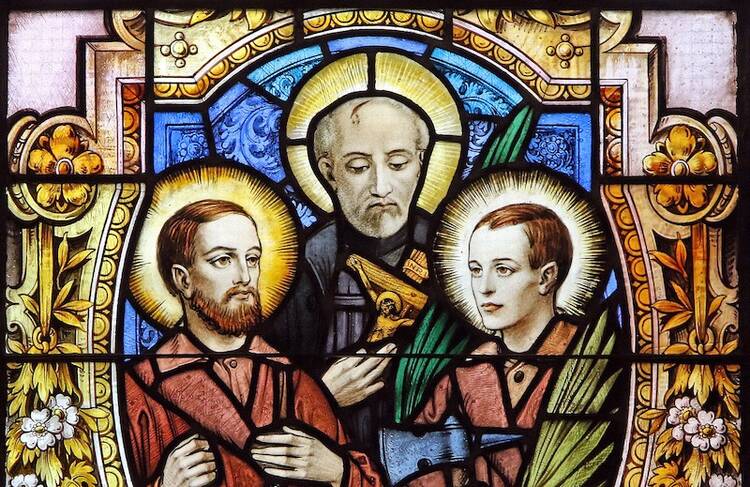The third-century Christian author Tertullian said the “blood of the martyrs is the seed of the church.” Wherever the church has grown and flourished, it is because it has been planted and watered by the blood of numerous men, women and children who followed Christ so single-mindedly that they gave their lives as witness to a love that is stronger than death.
The story of the flourishing South Korean church—a church with the unique distinction of being sustained by the ministry of the lay faithful for decades after all clergy were expelled in the late 19th century and a church irrigated by the blood of innumerable martyrs during waves of persecution—bears eloquent testimony to the veracity of Tertullian’s assertion. As the Book of Revelation puts it, “Love for life, did not deter them from death” (12:11).
Sometimes, it is only with the benefit of hindsight that we realize that the martyrs’ lives were not recklessly thrown away, that they amounted to something.
In laying down their lives for the cause of the Gospel, the martyrs found the ultimate meaning of their lives, just as Christ said: “Whoever loses his life for my sake will find it” (Mt 16:25). How so, one might ask, since the martyrs’ ministry was thought by their killers and bystanders to have ended in resounding failure?
Sometimes, it is only with the benefit of hindsight that we realize that the martyrs’ lives were not recklessly thrown away, that they amounted to something. Their blood, poured out like Christ’s, contained the seed of immortality. Their physical death was not the last word.
We can see many examples among the growing number of saints from the continent of North America. When the French Jesuits Jean de Brébeuf and Isaac Jogues were martyred in New France in the 1600s, their ministry among the Native American tribes seemed unsuccessful. In spite of this seeming failure, many natives would come to accept Christ in the years that followed the martyrs’ death. The martyrs were indeed the “real winners,” as Pope Francis recently declared.
How does one realize that the seed of the church planted in a particular land and watered by martyrs’ blood has flourished? We know this when it yields a harvest of trailblazing saints and revolutionary scholars who simultaneously enrich the Christian community and challenge it to show greater fidelity to Christ and a more courageous witness to the Gospel. We call saints those friends of God who illuminate for others the beauty of dwelling in God’s love and thus become conduits of hope and models of faith.
We call saints those friends of God who illuminate for others the beauty of dwelling in God’s love.
It is noteworthy that in recent times, a number of North American saints and martyrs have been recognized. The witness of the French Jesuit martyrs, in time, inspired others to follow the path of sanctity, and many have led virtuous lives without the shedding of blood. The church in North America is enriched and challenged by the luminous lives of saints Kateri Tekakwitha, Elizabeth Ann Seton, Katharine Drexel, Frances Xavier Cabrini, John Neumann, André Bessette, Damian of Molokai and Marianne Cope. The ongoing sainthood causes of Servants of God Julia Greeley, Mother Mary Lange, Dorothy Day, Thea Bowman and Augustus Tolton truly speak to the universality of the church and its modern-day vitality. And the faith-filled lives of Blesseds Stanley Rother and Solanus Casey, and Venerables Fulton Sheen and Pierre Toussaint, continue to give hope and inspiration to many.
Furthermore, the presence of theologians and scholars who expound, articulate and teach the faith in new, creative and ever more life-giving ways—always in dialogue with culture—is testimony to the church’s health in a particular land. The following American scholars past and present have helped the Christian community to contemplate anew the mystery of faith and to listen to God’s word with new depths of understanding: Avery Dulles, John Courtney Murray, John Tracy Ellis, Cyprian Davis, Richard John Neuhaus, Thomas Weinandy, Matthew Levering, Erasmo Leiva-Merikakis, Elizabeth Johnson, John Cavadini, Sarah Butler, Walter Burghardt, Robert Barron, Scott Hahn, Raymond Brown, M. Shawn Copeland and Dianne Bergant. Their works have helped the Christian community to better read the signs of the times and interpret them in the light of faith. The church in North America owes them a debt of gratitude.
In the face of the painful polarizations and internecine battles that we often encounter between the so-called traditionalists and progressives, with their debilitating consequences for effective Christian witness in North America, we dare to hope that our communion with these saintly figures and fellow disciples will continue to encourage and challenge us to proclaim the reign of God and to announce the lordship of Christ by working for social justice and lasting peace.












The French Jesuits were not the first Jesuits killed in what is now the United States. In the 1570's several Spanish Jesuits were killed by Indians in what is now Virginia. The Spanish never returned to this area after these massacres.